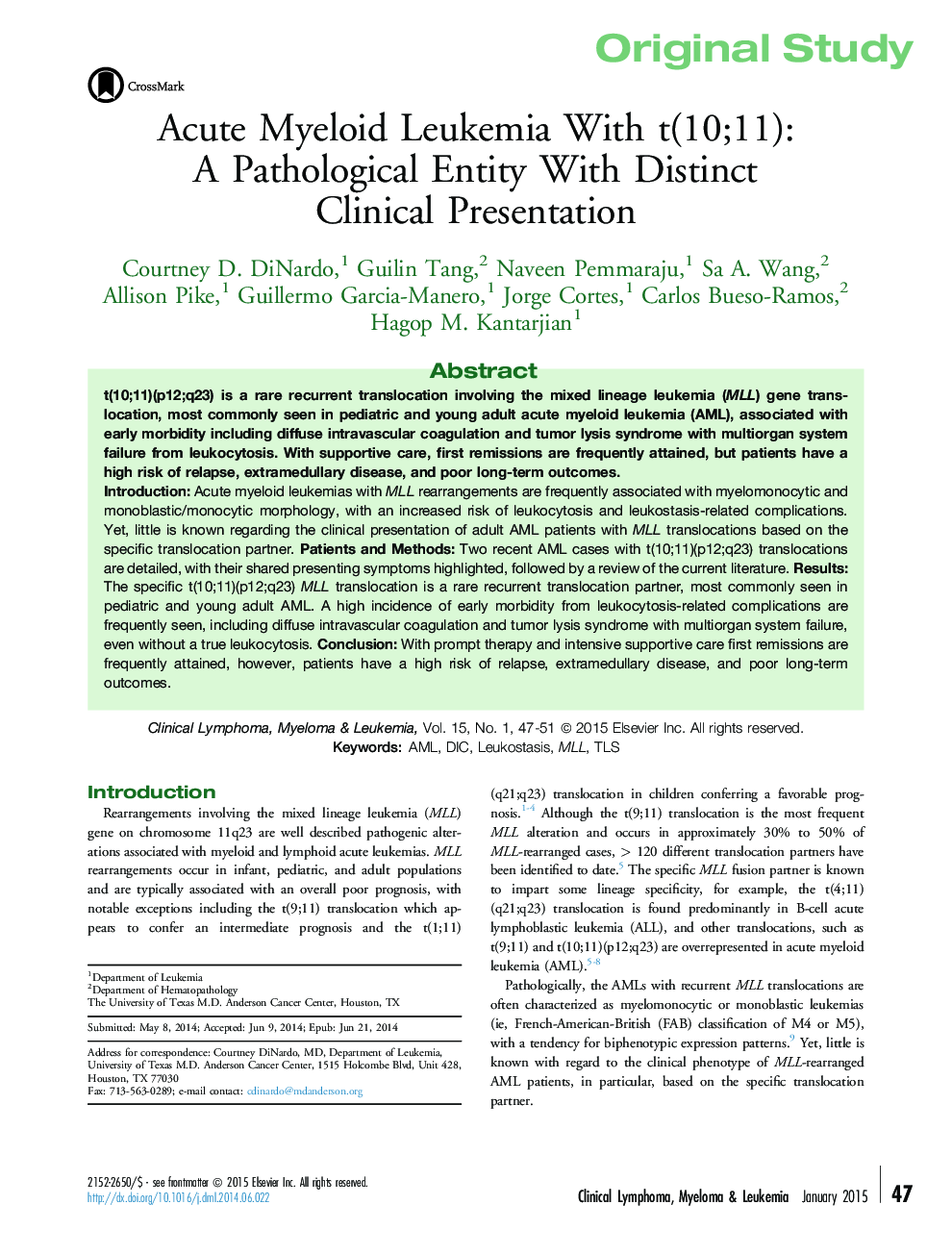| کد مقاله | کد نشریه | سال انتشار | مقاله انگلیسی | نسخه تمام متن |
|---|---|---|---|---|
| 5882831 | 1149769 | 2015 | 5 صفحه PDF | دانلود رایگان |

IntroductionAcute myeloid leukemias with MLL rearrangements are frequently associated with myelomonocytic and monoblastic/monocytic morphology, with an increased risk of leukocytosis and leukostasis-related complications. Yet, little is known regarding the clinical presentation of adult AML patients with MLL translocations based on the specific translocation partner.Patients and MethodsTwo recent AML cases with t(10;11)(p12;q23) translocations are detailed, with their shared presenting symptoms highlighted, followed by a review of the current literature.ResultsThe specific t(10;11)(p12;q23) MLL translocation is a rare recurrent translocation partner, most commonly seen in pediatric and young adult AML. A high incidence of early morbidity from leukocytosis-related complications are frequently seen, including diffuse intravascular coagulation and tumor lysis syndrome with multiorgan system failure, even without a true leukocytosis.ConclusionWith prompt therapy and intensive supportive care first remissions are frequently attained, however, patients have a high risk of relapse, extramedullary disease, and poor long-term outcomes.
Journal: Clinical Lymphoma Myeloma and Leukemia - Volume 15, Issue 1, January 2015, Pages 47-51